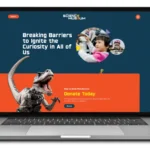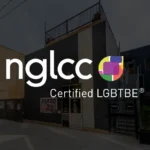Imagine the internet as a virtual world that everyone should be able to explore freely and comfortably, just like in real life. This concept is known as digital accessibility, and it’s a fundamental human right. Put simply, it means that every single person should have the ability to use the internet without any barriers getting in their way.
To ensure this accessibility, there are three key players that help shape the rules and guidelines for making websites user-friendly for everyone:
1. Section 508:
This part of the Rehabilitation Act of 1973 zooms in on plans and activities. Its purpose is to ensure that digital spaces are welcoming and usable for all, regardless of any disabilities.
2. ADA (Americans with Disabilities Act):
This important law focuses on civil rights and is applicable to every facet of life. It stands as a guardian for people with disabilities, guaranteeing they have equal access to everything, including online platforms.
3. WCAG (Web Content Accessibility Guidelines):
Recognizing that neither ADA nor Section 508 specifically outlined web standards, WCAG came to the rescue. It was created to set the industry standard for web accessibility. This set of guidelines ensures that websites are built in a way that everyone can navigate and comprehend.
So, why does all this accessibility matter? The reasons are compelling: first, you want your online information to reach and help every individual. Inclusivity is key, and by making your website accessible, you’re opening doors for a wider audience.
Also, consider the legal side of things. Neglecting digital accessibility could lead you straight into a lawsuit, a situation nobody wants to deal with. Common issues to watch out for include missing image descriptions, vague link labels, and website structures that assistive technologies can’t understand.
But here’s the bright side: Achieving accessibility is within reach for all websites. Three easy steps to get started:
1. Scan and Assess:
Take a close look at your website to figure out what areas need improvement in terms of accessibility. This will help you identify the changes required. There are also great (free) sites and products that will scan your site for you and highlight areas to improve. Try out one of our favorite’s, WAVE.
2. Stay Up to Date:
Web guidelines evolve, so keep a watchful eye on updates and changes. By staying informed, you can ensure your website remains aligned with the latest standards.
3. Spread the Word:
Show your commitment to accessibility by placing an accessibility statement on your website. This lets visitors know that you’re dedicated to providing an inclusive experience for everyone.
In a nutshell, digital accessibility isn’t just a technical consideration – it’s a way to make the internet an inclusive and welcoming space for every single person. By following these guidelines, you’re not only doing the right thing, but you’re also contributing to a more accessible online world.






